#agile innovation
Explore tagged Tumblr posts
Text
Unidentified Aerial Phenomena: Security and the Expanding Tech Horizon
Charting Disclosure's Hazards and Marvels Across Defense, Innovation and Assimilation
Seismic revelations may soon reshape global security forever. Groundbreaking amendments enshrined within the 2023 UAP Disclosure Act legally compel unprecedented transparency from government agencies regarding secret handling of vehicles apparently displaying technology that dwarfs the most advanced human capabilities.
Drafted amidst a quickening cascade of whistleblower testimonies under oath alleging systematic retrievals of multiple UAP wreckages for covert back-engineering attempts since at least the late 1930s, the extraordinary legislation contains explicit provisions for declassifying biological evidence of non-human origin. Thereby, imminent disclosures threaten dissolving constraints perpetuating incremental thinking against growing proof that humanity remains apprentice to cosmic innovations barely glimpsed till recent times.
With stakes spanning overhaul of aerial warfare doctrine, balancing vast economic upside against risks of unilateral militarization and bracing populations worldwide for revelation’s hazards transcending geopolitical divisions - global security integration must prevent catastrophic first-strike capabilities from secretly weaponized disclosures. Because our highest calling lies in collective vigilance against hostile actions targeting perceived weakness during turbulent transitions triggered by transparency narrowly avoided thus far. The future awaits our choices.
The recent Senate approval of the Unidentified Aerial Phenomena (UAP) Disclosure Act as part of the 2024 National Defense Authorization Act (NDAA) signals a pivotal moment for governments worldwide. The systematic disclosure and investigation of UAP under this legislation promise critical insights that could reshape socioeconomic, political, and technological landscapes globally.
Understanding the UAP Question
While fascination with UFOs and potential extraterrestrial activity has persisted within pop culture for decades, recent revelations indicate legitimate phenomena warranting scrutiny by the highest echelons of government.
The stakes are high, with former government officials like Luis Elizondo asserting that UAP likely represent breakthrough technologies not of human origin. If verified, such revelations carry staggering implications for global security and the tech industry's trajectory. However, obfuscation and ridicule have hindered earnest inquiry into this complex issue until now.
The Disclosure Act and its accompanying funding aim to change this status quo by compelling timely and methodical disclosure of UAP records. This initiative aligns with recent moves by NASA, the Pentagon, and the House of Representatives to investigate UAP systematically. While secrecy provisions remain to protect sensitive information, the legislation generally favors maximum transparency barring explicit security risks.
Global Security Implications
Most immediately, understanding UAP is an urgent national and global security priority. Their frequent appearance near sensitive military sites and advanced aerial maneuverability raise alarms about adversarial surveillance or covert technology testing. Furthermore, replicated UAP capabilities would confer overwhelming strategic advantages, necessitating countermeasures development by global powers.
On the other hand, UAP could also herald possibilities of unprecedented global cooperation. Any extraterrestrial origin discovery would instantly render terrestrial geopolitical divides insignificant compared to dealing with an alien civilization. Alternatively, if UAP represent secret advanced human technology, global security coordination becomes essential to avoid catastrophic unilateral militarization by any one nation.
In both scenarios, the Disclosure Act enables critical risk assessment by intelligence agencies while encouraging incremental transparency to strategic allies. It also allows global collaboration by standardizing UAP information gathering, recording, and sharing protocols among allies. Most importantly, the legislation prevents further peripheralization of the UAP issue by assigning institutional responsibility and funding.
The New Defense Landscape Ahead
Despite UAP displaying potentially revolutionary capabilities, their intentions, origins and future actions remain entirely unknowable currently. Thereby while crucial for defense planning, exclusive militarization forms a myopic lens limiting possibilities should revelations point towards peaceful extraterrestrial presence instead. However, verifying any intentions constitutes a remote prospect presently.
Prudence lies in unified vigilance and deterrence capacities against unilateral attempts forcibly exploiting UAP derivatives. Global security integration must prevent catastrophic first-strike capabilities from secretly weaponized revelations while avoiding assumptions presuming inherent hostility without evidence.
Quantitatively, the current $778 billion US defense budget could multiply several fold after accounting for essential modernization safeguarding aerial, naval and ground forces against UAP-scale asymmetric threats that obsolete current platforms.
Yet such vast expenditures may prove unnecessary if disclosures reveal surveillance operations rather than incursion plans. Thereby investigation outcomes under the Disclosure Act shape strategy enormously on whether UAP constitute threats or opportunities.
Impact on Emerging Technologies
While military aspects understandably dominate current discourse, UAP origins potentially carry staggering implications for business and technology.
Most transformative would be confirming extraterrestrial UAP origins and subsequently retrieving artifacts or biological remnants. Given descriptions of UAP capabilities, such artifacts could allow revolutionary manipulation of gravity, spacetime, consciousness, energy generation, propulsion systems, materials science, and more.
Studying such discoveries under the Disclosure Act could spark unprecedented public-private tech innovation partnerships. With government eminent domain over non-human artifacts, tech consortiums might gain conditional access to alien technology through government contracts. In return for developing countermeasures against hostile alien actions, consortiums could potentially apply findings towards revolutionary commercial applications.
More speculatively, artifacts could also demonstrate theoretical physics and computing techniques centuries ahead of human science. Adapting these into commercial use could skip incremental developments in areas like quantum gravity, multidimensional spacetime, wormholes, warp drives, and room temperature superconductors. With adequate public-private cooperation, such alien-inspired advances could emerge within years instead of decades or centuries.
However, such optimism warrants caution about potentially disastrous applications without appropriate safeguards. Still, prudent analysis of UAP under the Disclosure Act offers tantalizing possibilities to fast-track human technological progress through reverse-engineering superior alien science.
Space Race 2.0
Beyond defense, business strategy must integrate extreme scenarios dissolving constraints perpetuating incremental thinking against growing evidence that humanity remains apprentice to cosmic innovations barely glimpsed till recent times.
Corporate foresight requires synthesizing signals pointing to imminent disclosure of propulsion breakthroughs challenging incumbent assumptions. Cross-domain cases like industrial diamond research stalled for decades before subsequent advancements from studying natural formations provide analogous examples applicable for UAP technology assimilation.
Speculatively, verifying UAP origins could accelerate battery densities tenfold overnight and advance quantum gravitation theory by decades before additional derivative applications manifest across sectors.
Reconciling such unprecedented leaps with maintaining economic continuity and avoiding vulnerability from reliance upon non-human science shapes leadership strategy for the coming decade. Yet optimistically the upside multiplies exponentially once rupturing limitations self-imposed by mainstream science.
Thereby astutely balancing fragile human advancement against immensely more capable and inscrutable alien capabilities likely demonstrated by UAP defines victory for global security and stable progress. And wisdom advises preparing to receive new tenants in the cosmic neighborhood.
Societal Impact
Apart from security and technological aspects, UAP disclosure will inevitably transform societies and cultures in unpredictable ways. Confirming an extraterrestrial presence alone would force a fundamental reorientation of humankind’s place in the universe with philosophical, theological and existential impacts.
More prosaically, it may spark mass skepticism about government institutions previously denying evidence of UAP while breeding public cynicism about information transparency. Protest movements might arise that demand more rapid declassification of UAP-related secrets.
However, UAP disclosures could also improve public trust in government if revelations seem reasonably complete and decision-making appears consistently judicious. Gradual acclimatization to large-scale changes brought about by Disclosure Act mandated transparency will prove essential.
Globally, socioreligious stability concerns emerge regarding civilizations like Islam holding strong theological objections to alien life. However, lessons from epochal scientific shifts like Darwinism’s impact suggest most belief systems demonstrate more resilience through allegorical reinterpretations. Nonetheless, Disclosure will spur increased growth for atheistic worldviews together with Eastern mystical traditions already incorporating extraterrestrial concepts.
Break On Through
Revelations risk exacerbating tribalism and stigma against extraterrestrial diversity. Thereby cultural integration is imperative for societies to assimilate superior and potentially incomprehensible alien intelligence without turmoil.
Theological reconciliation must prevent identity crises and offer updated spiritual fulfillment where creation stories and afterlife beliefs now incorporate off-world civilizations. Arts therapy can assist individuals overcoming traumatic transitions through creative self-expression. Simultaneously sweeping educational reforms must familiarize extraterrestrial lifestyles and environments to popularize cosmic citizenship.
Quantifying potential costs, providing universal access to assimilation resources would require approximately $250 billion annually—2% of current OECD education spending. However exponential tech growth dividends from responsibly studying UAP could generate thousands of times this value for global budgets.
Therefore cultural leadership today must slay ghosts of ignorance and fear carried still from ancestors that once burnt heretics promoting heliocentric models later demonstrated true universally.
The cycle repeats again with points of light seen by our aviators and sailors arrayed ingeniously across strange vehicles transiting seas of night and nebulae, signaling this generation’s time to set aside childish things for realities far grander discovered and gratefully received.
UAP Tech Foresight for Businesses
For businesses, defense contracts aside, the Disclosure Act signals strategic foresight imperatives regarding disruptive innovations from UAP discoveries. Competitive pressures will demand integration of UAP tech adaptation within corporate vision and innovation frameworks.
Prudently, aerospace companies seem best positioned to capitalize on UAP-inspired advances through early government partnership options. However, the superiority of retrieved technology could rapidly obsolete current human implementations across transportation, energy, and materials science. Quantum and nanotech firms also stand to gain enormously from reverse-engineered UAP breakthroughs far surpassing theoretical human inquiry.
More broadly, successfully harnessing UAP progress under Disclosure will require agile innovation ecosystems supported by universities, startups, multinationals, and flexible public-policy. Hence governments worldwide, not just America, must proactively legislate around UAP technology transfers through consortiums balancing secrecy constraints with commercialization avenues.
Examining the Case for Disclosure: A Synthesis of Emerging Unidentified Aerial Phenomena Evidence
Based on recent revelations by government officials and declassified data, legislation now seeks unprecedented transparency around Unidentified Aerial Phenomena (UAP) potentially demonstrating technology exceeding current scientific paradigms.
Credible witness accounts allege systematic retrieval of advanced craft by defense agencies since at least the late 1930s for secret reverse-engineering attempts to achieve quantum leaps for national security priorities.With global security and trillions in commercial potential at stake, these developments warrant systematic executive scrutiny regarding likely disclosure of extraterrestrial or foreign adversarial breakthroughs manifesting as UAP.
Pivotal Recent Testimonies
Multiple testimonies by former defense officials presented under oath to legislators prove pivotal in catalyzing imminent disclosures. These revelations culminated recently in extraordinary amendments introduced by Senate Majority Leader Schumer enforcing unparalleled transparency regarding alien technologies potentially held illegally in secrecy across agencies.
Lt. Graves: Navy Super Hornet pilot chasing UAP rotating without observable propulsion off San Diego. “No known aircraft in the inventory exhibits such flight characteristics.”
Luis Elizondo: Director of secretive Advanced Aerospace Threat Identification Program (AATIP) at Pentagon started in 2007 to study military UAP reports. Claims “many” instances where observation confirmed as technology not of human origin.
Dr. Eric Davis: NASA quantum physicist Contracted by AATIP leadership. Worked in classified reverse-engineering programs in late 80s analyzing materials from “off-world vehicles not made on this earth.”
Supporting Developments & Legislation
Augmenting these personal accounts, recent developments by Congress, Pentagon and Intelligence Agencies add institutional legitimacy to formally investigating UAP without pre-judgements. The forthcoming declassification amendment builds on sustained bipartisan efforts for transparency.
Congressional UAP Hearings in 2022
Pentagon launching official reporting site for civil and military eyewitness accounts
Senate Intelligence Committee report confirming AATIP studied “off-world vehicles”
DNI prelim report confirming 11 near collisions indicating advanced technology
Extraordinary Amendment with 300 day maximal disclosure timeframe for all government-held alien technologies
Quantifying the Scale
Tangible benchmarks convey scale alongside intriguing testimony claims requiring corroboration. Data ranging from defense budget allocations, sizes of total addressable markets to projected derivatives values from mastering current levels of observed UAP capabilities provide relevant scale context.
$22+ million
Funding allotted to AATIP before 2012 at its peak
$3+ trillion
Current global aerospace market value as baseline
Over $10 trillion
Projected market value including terrestrial spinoffs through 2050 after full disclosure
Societal Assimilation Challenges
Lastly and most profoundly, even fractional validation requires bracing populations worldwide for significant psychological trauma given UAP evidence shattering current paradigms. Belief systems across philosophy and theology face reckoning. Thus cultural integration frameworks demanding unprecedented wisdom and empathy become urgent to avoid mass turmoil.
Embracing the Unknown
In conclusion, evaluated evidence suggests full-scale disruption beyond immediate comprehension once revelations likely occur regarding secret government handling of vehicles apparently displaying technology exceeding the most advanced human capabilities.
Given stakes spanning global security and immense innovation upside, corporate strategy must integrate extreme scenarios that dissolve constraints perpetuating incremental thinking against growing proof that humanity remains apprentice to cosmic mysteries barely glimpsed till recent times. Leadership embracing this challenge with optimism stands rewarded by possibilities unveiled soon to define coming decades fruitfully.
The Disclosure Act’s public release mandate for information around Unidentified Aerial Phenomena heralds great promise and great uncertainty in equal measure. It expands governmental scrutiny into a phenomenon that could alter human civilization overnight upon confirmation of an extraterrestrial presence. More positively, it formalizes public-private coordination structures for possibly integrating superior alien science into human technology.
However, premature conclusions around UAP must be avoided given legitimate national security risks and likely cultural shock effects from overly rapid disclosures. The Act’s transparency provisions allowing judicious secrecy coupled with its methodical investigation framework provide prudent safeguards against such instability. Nonetheless, profound global impacts for security, business, culture and religion appear inevitable as we stand at the cusp of revolutionary UAP revelations redefining humanity’s cosmic status.
Awaken to Revelation’s Marvels
Friends, these unfolding times signal immense possibility if we approach revelations with optimism rather than fearfulness. Thereby the Tulumination web store offers products celebrating illuminating perspectives from global UAP culture alongside designs harnessing mystical symbols found across ancient civilizations.
Our apparel and accessories feature visionary artwork resonating with contemporary disclosure conversations building momentum today. Media reports now regularly confirm Unidentified Aerial Phenomena manifesting advanced technology interacting with military encounters and commercial pilots.
Thereby we feel inspired sharing garments and items promoting unity, wisdom and transparency around responsibilities facing humanity during this transitional era as profound disclosures loom imminent regarding cosmic citizenship. Please browse designs that resonate amidst uncertainty and chaos pointing toward transcendence.
May selections from the Tulumination store affirm each journey navigating intense energies reshaping reality filters before our eyes. With art and apparel symbolizing reintegration with cosmic consciousness, we aim promoting resilience and optimism as revelation’s hazards give way to its marvels unveiled for societies welcoming truths concealed for millennia but hidden no more.
0 notes
Text
0 notes
Text
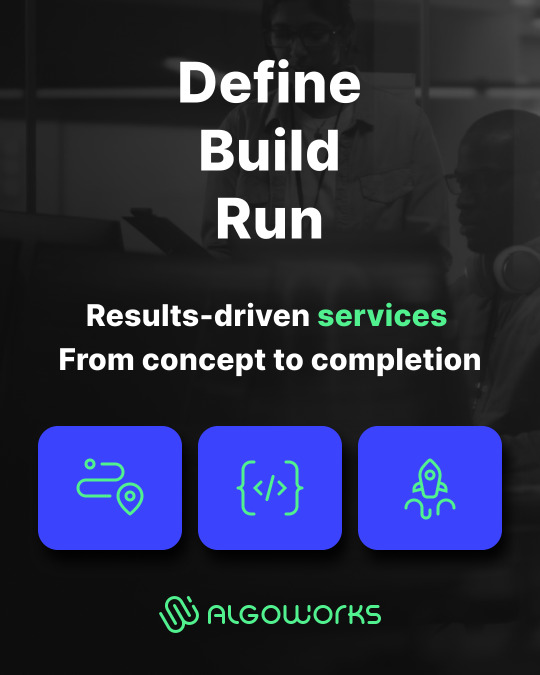
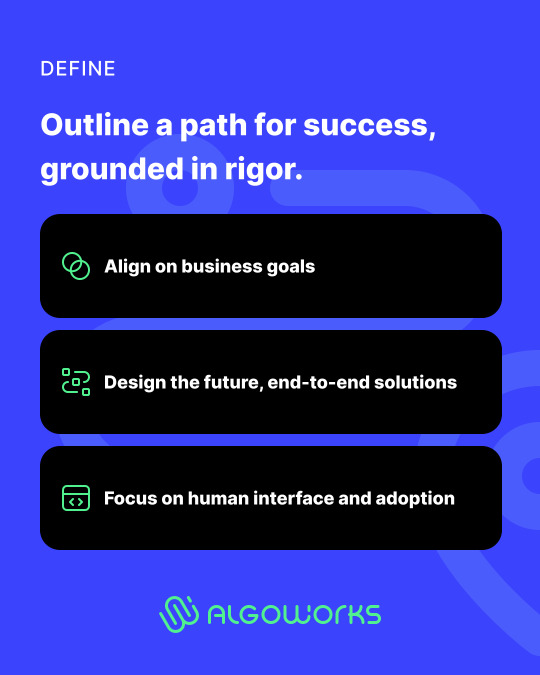

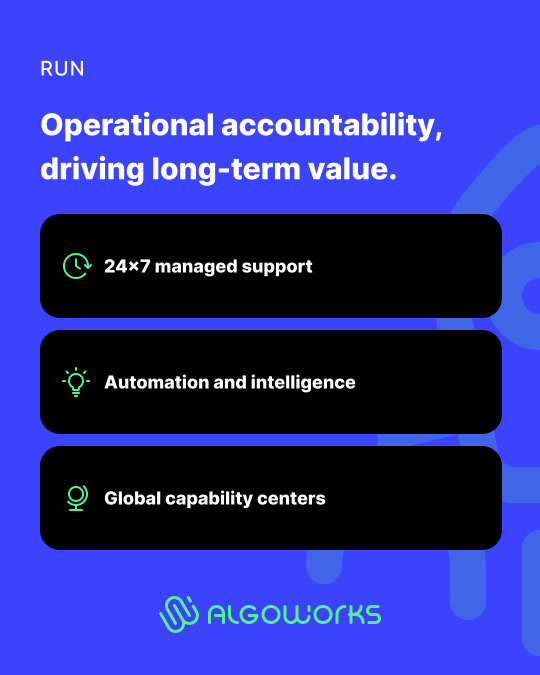

We follow our Define, Build, Run framework to execute flawlessly. From deep listening and 360° planning, to building with agile development and clean code, we ensure performance, security and return on investment through 24/7 monitoring and SLA-backed delivery.
Visit our website to learn more! https://www.algoworks.com/services/
#digital transformation#agile development#clean code#software engineering#cyber security#enterprise solutions#tech innovation#cloud services#innovations#technology#leadership#business excellence
2 notes
·
View notes
Text
Why Scrum/Agile Should Be Your Go-To for Product Development

s your product development process feeling slow, clunky, and inflexible? Scrum/Agile might be the perfect solution! Widely considered the most popular Agile framework, Scrum/Agile offers a fast, adaptable approach that prioritizes continuous value delivery.
Here's why Scrum/Agile is a game-changer for product development:
Maximize ROI & Resource Allocation - Scrum/Agile ditches the traditional top-down approach and empowers your team to self-organize and estimate workloads. This "bottom-up" planning ensures resources are optimized for maximum return across all IT projects.
Boost Collaboration & Transparency - Say goodbye to information silos! Scrum/Agile fosters open communication and real-time project visibility, keeping everyone on the same page and promoting informed decision-making.
Adapt to Change with Ease - The world of product development is anything but static. Scrum/Agile's iterative nature allows teams to quickly adjust to shifting priorities and requirements, ensuring your project stays relevant and on track.
Faster Time-to-Market & Satisfied Stakeholders - Break the cycle of slow product launches! Scrum/Agile's iterative approach delivers valuable product increments in rapid cycles. Built-in feedback loops guarantee stakeholder satisfaction by continuously aligning development with their expectations.
Unlock Innovation & Mitigate Risk - Scrum/Agile empowers teams to leverage diverse skill sets and self-organize for maximum problem-solving power. This fosters innovation and allows for early risk identification, minimizing the impact of unforeseen challenges.
Continuous Learning & Efficiency at Its Core - Scrum/Agile is all about continuous improvement. Teams are encouraged to learn from each iteration, fostering a culture of adaptability and efficiency. This ensures your product development process is constantly evolving to deliver the best possible results.
Ready to streamline your product development and achieve breakthrough results? Scrum/Agile might be the key! How do you think you could implement it effectively?
That's where Vabro comes in. Vabro is an AI-powered SaaS platform specifically designed to support Scrum & Agile methodologies. Vabro offers a robust suite of features to help your IT teams, DevOps, and project managers seamlessly manage workflows, collaborate efficiently, and deliver exceptional results.
Want to see how Vabro can take your Scrum/Agile game to the next level? Discover the Vabro difference for free and see how it can help transform the way teams work.
To know more, please visit Vabro.com.
5 notes
·
View notes
Photo

#Innova8 combining #designthinking #servicedesign and #userexperience #customer validated services and products Innova8™ combines design thinking, service design and user experience within an 8 hour process, that takes #AgileWorldInc #AgileTransformation #AgileFinOps #LeanPortfolioManagement https://agile-world.us/innova8-combining-design-thinking-service-design-and-user-experience/?utm_source=tumblr&utm_medium=%23AgileWorld&utm_campaign=%23AgileWorld
#karlsmithuserexperienceu#hourinnvovation#agile#agilehumans#AgileWorld#AgileWorldUSA#Design#DesignThinking#DevOps#Digital#HumanCentered#INNOVATION#Lean#OrganisationalDesign
2 notes
·
View notes
Text
Embracing Agility: How Cloud Architecture Design Transforms Businesses
Introduction to Cloud Architecture In the contemporary landscape of technology, businesses are increasingly reliant on cloud services to propel their operations forward. Cloud architecture design has emerged as a pivotal element in this domain, offering scalable, flexible, and secure infrastructures that cater to diverse business needs. Crafting an efficient cloud architecture involves strategic…
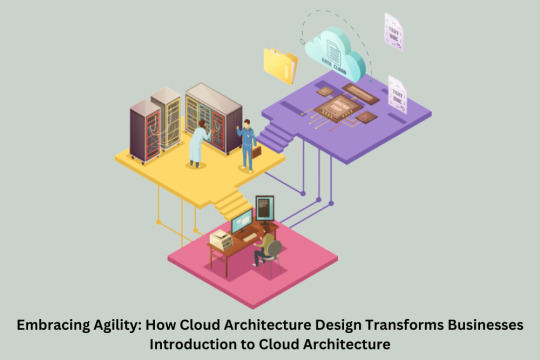
View On WordPress
#Adaptive Cloud Solutions#Agile Cloud Solutions#Agility in Business#Business Transformation#Cloud Architecture Design#Cloud Infrastructure Evolution#Cloud Technology Impact#Digital Transformation Strategies#Embracing Agility#Future of Cloud Architecture#Innovations in Cloud Design#Strategic Cloud Implementation#Transformative Business Practices
2 notes
·
View notes
Text
Full Stack Development: Using DevOps and Agile Practices for Success
In today’s fast-paced and highly competitive tech industry, the demand for Full Stack Developers is steadily on the rise. These versatile professionals possess a unique blend of skills that enable them to handle both the front-end and back-end aspects of software development. However, to excel in this role and meet the ever-evolving demands of modern software development, Full Stack Developers are increasingly turning to DevOps and Agile practices. In this comprehensive guide, we will explore how the combination of Full Stack Development with DevOps and Agile methodologies can lead to unparalleled success in the world of software development.
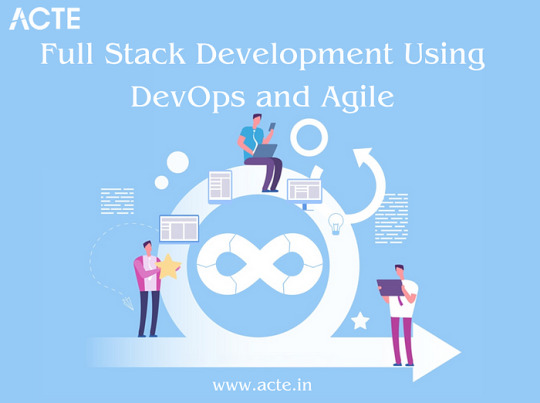
Full Stack Development: A Brief Overview
Full Stack Development refers to the practice of working on all aspects of a software application, from the user interface (UI) and user experience (UX) on the front end to server-side scripting, databases, and infrastructure on the back end. It requires a broad skill set and the ability to handle various technologies and programming languages.
The Significance of DevOps and Agile Practices
The environment for software development has changed significantly in recent years. The adoption of DevOps and Agile practices has become a cornerstone of modern software development. DevOps focuses on automating and streamlining the development and deployment processes, while Agile methodologies promote collaboration, flexibility, and iterative development. Together, they offer a powerful approach to software development that enhances efficiency, quality, and project success. In this blog, we will delve into the following key areas:
Understanding Full Stack Development
Defining Full Stack Development
We will start by defining Full Stack Development and elucidating its pivotal role in creating end-to-end solutions. Full Stack Developers are akin to the Swiss Army knives of the development world, capable of handling every aspect of a project.
Key Responsibilities of a Full Stack Developer
We will explore the multifaceted responsibilities of Full Stack Developers, from designing user interfaces to managing databases and everything in between. Understanding these responsibilities is crucial to grasping the challenges they face.
DevOps’s Importance in Full Stack Development
Unpacking DevOps
A collection of principles known as DevOps aims to eliminate the divide between development and operations teams. We will delve into what DevOps entails and why it matters in Full Stack Development. The benefits of embracing DevOps principles will also be discussed.
Agile Methodologies in Full Stack Development
Introducing Agile Methodologies
Agile methodologies like Scrum and Kanban have gained immense popularity due to their effectiveness in fostering collaboration and adaptability. We will introduce these methodologies and explain how they enhance project management and teamwork in Full Stack Development.
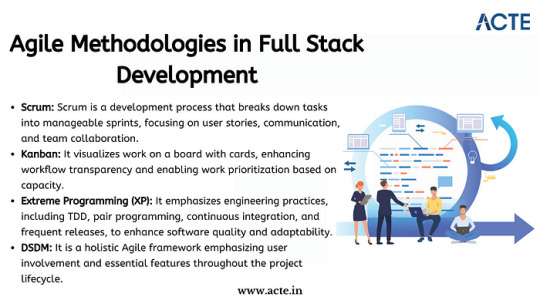
Synergy Between DevOps and Agile
The Power of Collaboration
We will highlight how DevOps and Agile practices complement each other, creating a synergy that streamlines the entire development process. By aligning development, testing, and deployment, this synergy results in faster delivery and higher-quality software.
Tools and Technologies for DevOps in Full Stack Development
Essential DevOps Tools
DevOps relies on a suite of tools and technologies, such as Jenkins, Docker, and Kubernetes, to automate and manage various aspects of the development pipeline. We will provide an overview of these tools and explain how they can be harnessed in Full Stack Development projects.
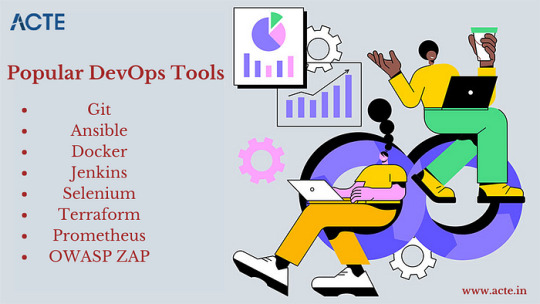
Implementing Agile in Full Stack Projects
Agile Implementation Strategies
We will delve into practical strategies for implementing Agile methodologies in Full Stack projects. Topics will include sprint planning, backlog management, and conducting effective stand-up meetings.
Best Practices for Agile Integration
We will share best practices for incorporating Agile principles into Full Stack Development, ensuring that projects are nimble, adaptable, and responsive to changing requirements.
Learning Resources and Real-World Examples
To gain a deeper understanding, ACTE Institute present case studies and real-world examples of successful Full Stack Development projects that leveraged DevOps and Agile practices. These stories will offer valuable insights into best practices and lessons learned. Consider enrolling in accredited full stack developer training course to increase your full stack proficiency.
Challenges and Solutions
Addressing Common Challenges
No journey is without its obstacles, and Full Stack Developers using DevOps and Agile practices may encounter challenges. We will identify these common roadblocks and provide practical solutions and tips for overcoming them.
Benefits and Outcomes
The Fruits of Collaboration
In this section, we will discuss the tangible benefits and outcomes of integrating DevOps and Agile practices in Full Stack projects. Faster development cycles, improved product quality, and enhanced customer satisfaction are among the rewards.
In conclusion, this blog has explored the dynamic world of Full Stack Development and the pivotal role that DevOps and Agile practices play in achieving success in this field. Full Stack Developers are at the forefront of innovation, and by embracing these methodologies, they can enhance their efficiency, drive project success, and stay ahead in the ever-evolving tech landscape. We emphasize the importance of continuous learning and adaptation, as the tech industry continually evolves. DevOps and Agile practices provide a foundation for success, and we encourage readers to explore further resources, courses, and communities to foster their growth as Full Stack Developers. By doing so, they can contribute to the development of cutting-edge solutions and make a lasting impact in the world of software development.
#web development#full stack developer#devops#agile#education#information#technology#full stack web development#innovation
2 notes
·
View notes
Text
Disruptive Business Strategies: Innovate, Compete, and Succeed
Disruptive business strategies are innovative approaches that challenge the status quo of the industry and introduce new products, services, or business models that change the way things are done. Here are a few examples of disruptive business strategies that have expanded businesses worldwide: Uber: Uber is a ride-sharing service that disrupted the traditional taxi industry. Instead of owning a…
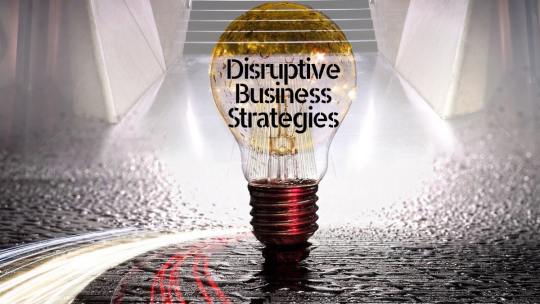
View On WordPress
#agile development#business competition#business leadership#business strategy#business success#business tips#competitive advantage#competitive edge#creative culture#emerging trends#grow business#industry norms#innovation#market disruption#market opportunity#marketing#technology#user experience
2 notes
·
View notes
Text
🚨 AI in Life: Martech, AI Agents, and The Risks of Deep Integration As AI and martech tools become more advanced, it’s tempting to integrate everything. But deep integration isn’t always smart—it can raise costs, reduce flexibility, and blur human judgment. In our latest piece, we explore the hidden risks of over-automation and offer practical ways to stay efficient without getting locked in. Read now 👉 #AIinMarketing #Martech #AIIntegration #DigitalStrategy #MarketingOps #AIAgents #FutureOfWork #TechEthics #MarketingTechnology
#Agility#Brand Impact#Consent#Creativity#Critical Thinking#Data#Efficiency#Flexibility#Innovations#Integration#Marketing#Risk#Sustainability#Systems#Transparency#Unsustainability#Value
0 notes
Text
The "Old-School Doc" Fades, The Modern Pioneer Emerges
The collective imagination often lingers on the image of the traditional "family doctor"—certainly dedicated, but perhaps a bit stuck in their ways, even reluctant to change. They might be seen as healthcare artisans, far removed from the dynamism of innovation. Yet, this caricature is now being swept away by the emergence of a new breed of professional: the modern, audacious, and deeply connected physician.
Their long years of training, sometimes dismissed as mere academic "cramming" or a simple academic stepping stone to social status, are, in reality, an invaluable treasure trove. They go beyond rote memorization of pathologies. They forge a sharp analytical mind, an ability to solve complex problems under pressure, clinical intuition honed by on-the-ground experience, and, crucially, the empathy and listening skills indispensable for human connection. It's precisely this human and professional richness that takes on an unexpected dimension in the face of Artificial Intelligence.
AI: A Threat? No, a Powerful Ally in Service of Humanity!
While other professions might tremble at the thought of being "Uberized" or radically transformed by AI, physicians, especially those embracing the "Portfolio Clinician" model, are positioning themselves not as victims, but as enlightened architects of healthcare's future.
AI, the "Super-Resident," Needs an Experienced Master: Artificial intelligence is a prodigious information-processing machine, excellent at calculation and pattern recognition. But it lacks the intuition for a rare diagnosis, the subtle analytical skill for complex cases with atypical symptoms, or the empathetic listening needed when faced with a distressed family. AI will be a tremendous tool for physicians, capable of analyzing millions of patient records in an instant or predicting risks with unprecedented accuracy. Yet, it will never replace human clinical judgment, the ability to make decisions under total uncertainty, ethical wisdom, or the skill to build that essential trusting relationship with the patient. Portfolio physicians don't lose their empathy, their ethics, their listening skills, or their professional code by integrating technology; on the contrary, they strengthen them, freeing up time for the human aspect of care.
"Give Us the Right Recipe, and We'll Make AI Great!": One persistent fear is that AI will take control indiscriminately. But who will "teach" it? This is where the practitioner's experience becomes an invaluable resource. The years spent at patients' bedsides, understanding the subtleties of diseases, observing reactions to treatments, perceiving imperceptible signs... it's this tacit knowledge, this "know-how" from the field, imbued with professional ethics, that is indispensable for training, validating, and "educating" AI algorithms. Without this clinical wisdom and ethical conscience, AI would remain a powerful engine without a driver, incapable of navigating the complexities of the human body and soul. It's the daily practice of physicians that enriches AI, making it more reliable, safer, and more relevant, while meticulously upholding professional ethics.
"Home-Grown" Tools for Demanding Professionals: Gone are the days of cumbersome, ill-adapted software imposed on physicians without consultation! Those engaged in innovation are not mere "users" but co-creators. By actively participating in the design and development of digital tools, they ensure that these technologies (including AI) are intuitively usable, genuinely practical, and seamlessly integrated into the clinical workflow. This direct involvement fosters much faster and more enthusiastic adoption by the entire profession, as practitioners recognize in these tools the "touch" of colleagues who understand their needs and who guarantee ethical and professional compliance.
Agility That Builds Legitimacy and Leadership
This newfound agility within the medical profession is a major force that redefines not only its value but also its legitimacy and leadership role in shaping tomorrow's healthcare landscape:
From Expert to Visionary Sage: Accumulated encyclopedic knowledge is no longer just "proof of competence" on a yellowed diploma, but transforms into clinical and strategic wisdom. This wisdom, rooted in unwavering ethics and attentive listening, is crucial for anticipating technological shifts, evaluating their relevance, and integrating them ethically, thereby ensuring that innovation remains in service of humanity.
"Living Bridges" Between Science, Technology, and Humanity: These agile physicians are best positioned to build strong bridges between fundamental research, technological ferment, and concrete application at the patient's bedside. They ensure that innovation is not just a technical feat, but a truly useful and human solution, always respectful of patient dignity and professional ethical principles.
In short, the "surprise" for decision-makers shouldn't be the perceived threat of AI hovering over the old medical world. It should be the unforeseen capacity of physicians to reinvent themselves, to embrace the role of pioneers, and to leverage their profound expertise—without ever compromising their empathy, ethics, listening skills, or professional integrity—to guide this revolution. This is a vital, often underestimated force, and an absolutely essential strategic asset for shaping the future of our healthcare systems.
#Medicine#Medical Career#Portfolio Clinician#Physician Entrepreneur#Healthcare Innovation#HealthTech#Artificial Intelligence (AI) in Healthcare#Medical Ethics#Telemedicine#Career Management#Clinician Well-being#Healthcare Transformation#Medical Agility#Medical Practice
0 notes
Text
KI-Weiterbildung mit Zertifikat: Weiterbildung zum Geprüften KI-Manager / zur Geprüften KI-Managerin
"Der Abschlusstest hätte mich fast davon abgehalten, diesen Lehrgang zu belegen. Aber er trägt zur Seriosität und Ernsthaftigkeit des gesamten Lehrgangs bei. Ich bin im Nachhinein sehr froh, dass ich mich für diese seriöse Zertifikats-Weiterbildung zum Geprüften KI-Manager entschieden habe. Ich habe viel mehr Tipps und Inhalte mitgenommen als bei anderen Weiterbildungen angeboten werden. Die…
#Agile#Artificial Intelligence#Berufsausbildung#Big Data#Change Management#Digitale Transformation#Dozent#Future Work#High Potential#Innovation#Karriere#Kompetenz#Kompetenzmanagement#Kostenreduzierung#Mitarbeiter#Mitarbeiterentwicklung#New Work#Personalentwicklung#Personalpotenzial#Potenzial#Projektcontrolling#Projektmanagement#Qualifikation#Referent#Risikomanagement#Umsetzer
0 notes
Text
Software Product Engineering Services | Irom Technologies
Considering how the world is moving forward, businesses need more than just software development. They need innovation, quality, and speed. This is where product engineering in software development becomes essential. It helps companies build scalable, secure, and user-focused digital products from idea to launch.
Let us explore what software product engineering services are and why they matter in today’s tech-driven landscape.
Understanding Software Product Engineering Services
What are Software Product Engineering Services?
Software product engineering services involve end-to-end development of a software product. It includes designing, developing, testing, deploying, and maintaining a digital product. These services are not limited to coding alone but cover the full product lifecycle.
They aim to create reliable, scalable, and innovative software solutions that meet both user needs and business goals.
Key Components of Software Product Engineering Services
1. Product Ideation and Strategy
Companies begin with an idea and turn it into a workable product concept.
Teams study the market, analyze competition, and identify user needs. This step ensures the product idea solves a real problem and fits current market trends.
A clear product roadmap is created based on research and user feedback. The roadmap sets the direction for development and aligns stakeholders on goals and milestones.
Stakeholders work together to define goals and success metrics. Everyone involved agrees on what success looks like, which guides progress tracking and decision-making.
#software product engineering#product development services#agile software development#digital transformation#UX and UI design#scalable software solutions#end-to-end software services#product lifecycle management#quality assurance testing#innovative tech solutions
0 notes
Text
The Weekend Launch: How an AI Code Assistant Helped a Startup Beat the Clock
(A dramatized account based on common use cases seen in modern startups) When Priya Mehta quit her job at a fintech giant to co-found a startup, she knew what she was getting into—long hours, tight deadlines, and relentless pressure. What she didn’t expect was that her first major product launch would be saved by something that didn’t even exist during her college years: an AI code…
#agile teams#AI in coding#AI limitations#AI tools#Claude AI#code assistants#developer tools#GitHub Copilot#human AI collaboration#productivity tools#real world AI#software engineering#startup development#tech innovation#web development
0 notes
Text
Embrace the Future with AI 🚀
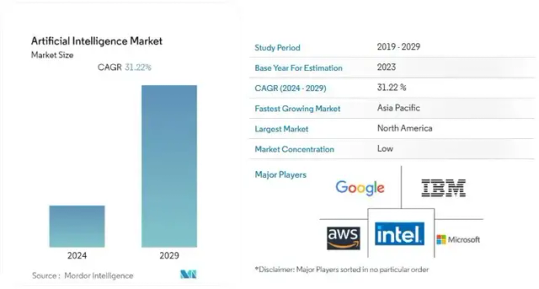
The AI industry is set to skyrocket from USD 2.41 trillion in 2023 to a projected USD 30.13 trillion by 2032, growing at a phenomenal CAGR of 32.4%! The AI market continues to experience robust growth driven by advancements in machine learning, natural language processing, and cloud computing. Key industry player heavily invests in AI to enhance their product offerings and gain competitive advantages.
Here is a brief analysis of why and how AI can transform businesses to stay ahead in the digital age.
Key Trends:
Predictive Analytics: There’s an increasing demand for predictive analytics solutions across various industries to leverage data-driven decision-making.
Data Generation: Massive growth in data generation due to technological advancements is pushing the demand for AI solutions.
Cloud Adoption: The adoption of cloud-based applications and services is accelerating AI implementation.
Consumer Experience: Companies are focusing on enhancing consumer experience through AI-driven personalized services.
Challenges:
Initial Costs: High initial costs and concerns over replacing the human workforce.
Skill Gap: A lack of skilled AI technicians and experts.
Data Privacy: Concerns regarding data privacy and security.
Vabro is excited to announce the launch of Vabro Genie, one of the most intelligent SaaS AI engines. Vabro Genie helps companies manage projects, DevOps, and workflows with unprecedented efficiency and intelligence. Don’t miss out on leveraging this game-changing tool!
Visit www.vabro.com
#ArtificialIntelligence#TechTrends#Innovation#Vabro#AI#VabroGenie#ProjectManagement#DevOps#Workflows#Scrum#Agile
3 notes
·
View notes
Text
Product Engineering Services for Modern Software Solutions
Modern software solutions take a comprehensive approach to designing, developing, testing, and maintaining software products throughout their lifecycle. This covers everything from initial product ideation and strategy to post-launch support and ongoing improvements. A product engineering services company plays a vital role in this process, assisting businesses in developing robust, scalable, and user-friendly software that meets market demands and user needs. Innovation is now necessary and no longer optional.
That’s where product engineering services play a transformative role. By bridging the gap between idea and execution, these services enable organizations to launch, scale, and maintain robust software solutions in a competitive landscape. From startups aiming to disrupt markets to enterprises modernizing legacy systems, the demand for intelligent, scalable, and agile software continues to grow rapidly. Fortunately, with the right approach to product engineering, even complex ideas can be transformed into high-performing digital products.
Importance of Product Engineering for Modern Software Solutions
To begin with, product engineering services cover the entire lifecycle of a software product, from ideas and design to development, testing, deployment, and maintenance. This comprehensive approach ensures that products are not only functional and user-friendly but also scalable and ready for the future.
Moreover, these services are typically offered by specialized teams with diverse skills, allowing for agile practices, rapid prototyping, and quicker time-to-market. Whether it’s mobile apps, SaaS platforms, enterprise tools, or IoT systems, product engineering plays a vital role in building the digital foundation of modern businesses………….
#product engineering services#software product development#digital product engineering#agile product engineering#scalable software solutions#software lifecycle management#product innovation strategy#cloud-native development#DevOps integration#modern software architecture
0 notes
Text
Ever wonder how Avon, Wrigley, & 3M became household names? It wasn't what you think!
Our latest blog in the "From the Unexpected to the Unstoppable" series unpacks their surprising origins, revealing how accidental discoveries and bold pivots forged these business empires.
📖 Read today’s blog at the link above.
#Strategic Pivots#Accidental Innovation#Business Origins#Market Opportunity#Entrepreneurial Agility#Jerry Justice#TAImotivations
0 notes